1lumen selects and reviews products personally. We may earn affiliate commissions through our links, which help support our testing.
NlightD T90 GT9090 & SFN43 DUAL review
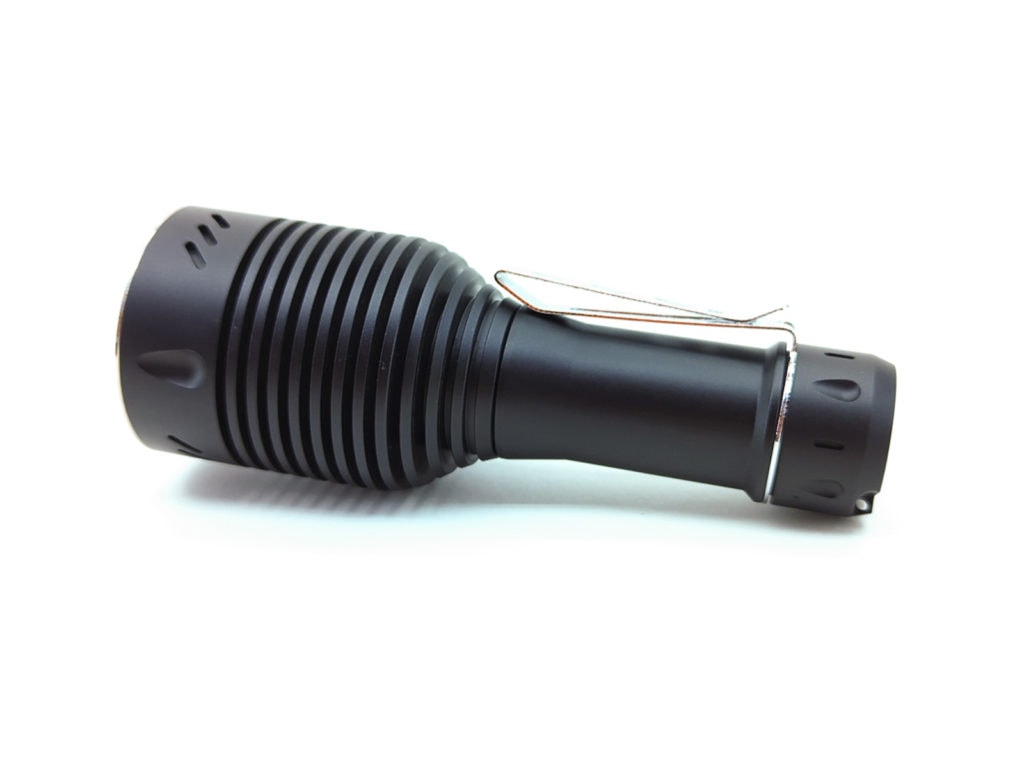
NlightD T90 specifications
| Brand/model | NlightD T90 |
|---|---|
| LED | GT9090 and SFN43 |
| Max. Lumens | 5,000 Lumens (GT9090) 6,300 Lumens (SFN43) |
| Max. Beam intensity / distance | 162,300 cd (GT9090) 122,600 cd (SFN43) |
| Battery config. | 1*21700 |
| Onboard charging | N/A |
| Modes | Multi (Anduril UI) |
| Blinkies | Multi (Anduril UI) |
| Reflector | Smooth |
| Waterproof | IPX7 |
| Review date | June 2022 |
Introduction:
Most people in the flashlight community know of Neal and his web shop, Nealsgadgets. He offers a wide variety of the latest and great enthusiast lights. A couple years ago, Neal came out with his very own flashlight: the NlightD T90. In my opinion, it looks like a Lumintop X9L on steroids. Neal originally outfitted the T90 with the monstrous Luminus SBT90.2 LED. That’s a power hungry, beefy, throwy LED – but also quite expensive. In the past year, many new Chinese LEDs have burst onto the scene – some of them being very high power and a fraction of the cost of the SBT90.2. Neal has chosen to outfit his T90 with two of these new LEDs: the GT9090 and the SFN43.
Let’s be clear – the T90 is a midsize flashlight with a whole lotta power. Maybe not the most practical light, but definitely a lot of fun. Oh, and for you Anduril fans out there – it’s running your favorite UI.
Package quality.
The T90 ships in a nondescript brown cardboard box. It’s pretty plain, but very sturdy and gets the job done. Inside was:
- NlightD T90
- 18650 adapter
- Spare o-rings
- Pocket clip
- Lanyard
- Manual
I’ve gotta say – this is the most complete Anduril manual that I’ve ever seen. It’s not just the normal Anduril diagram. There are lots of descriptions, instructions, tables, etc. Very in-depth.
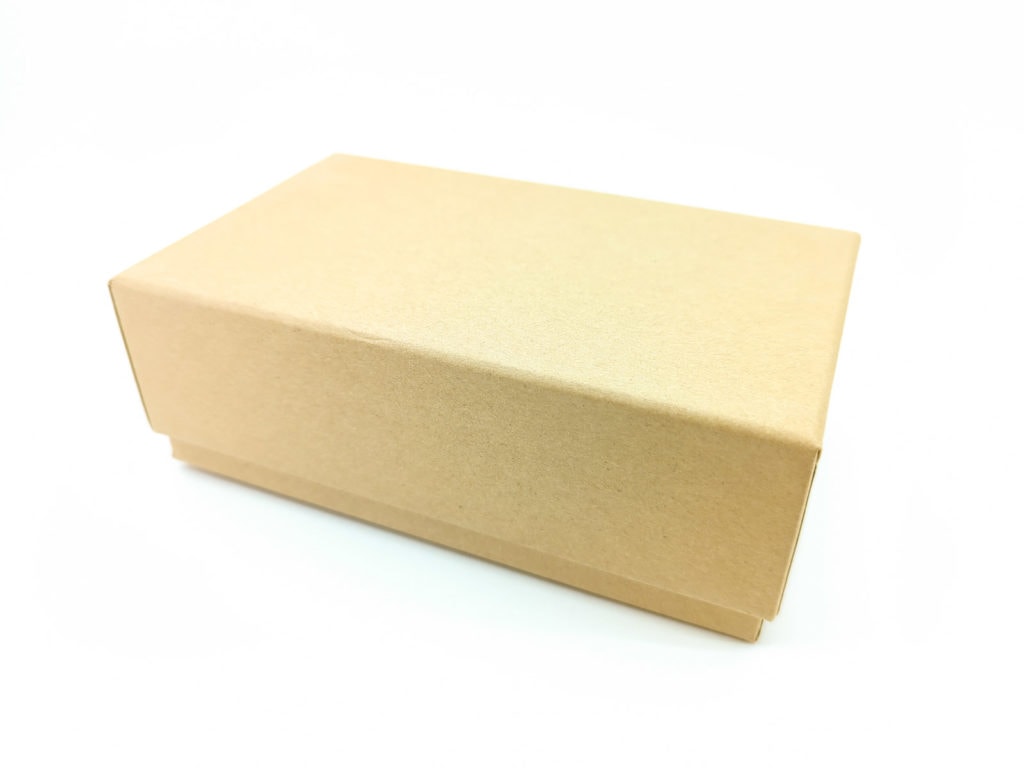
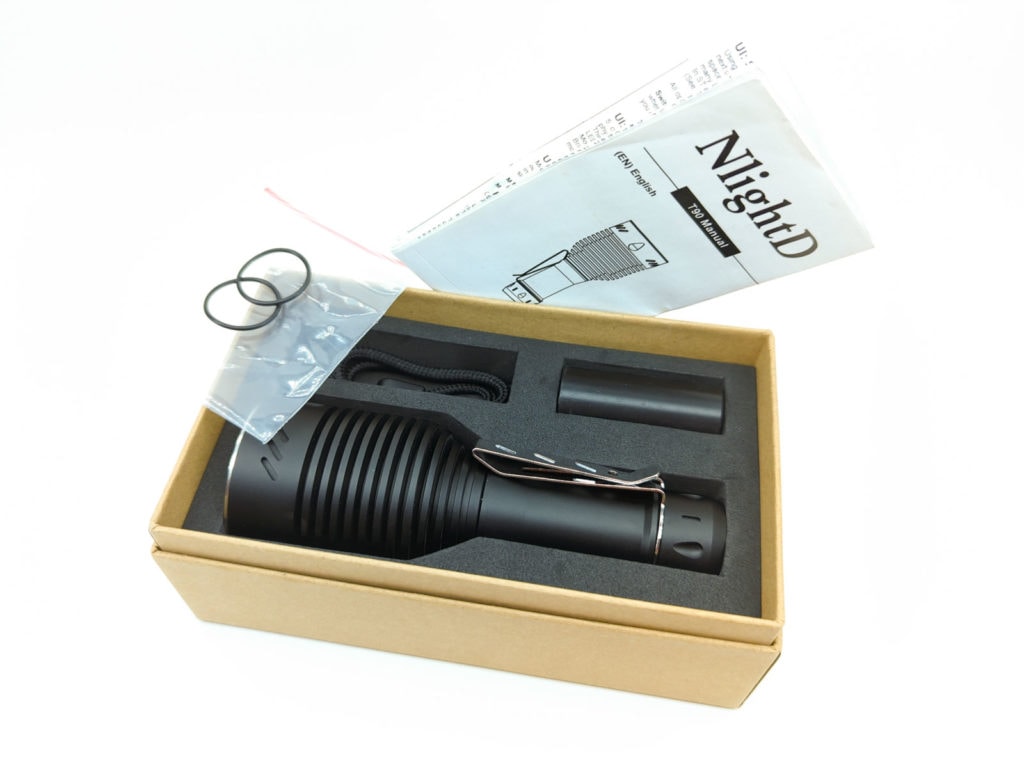
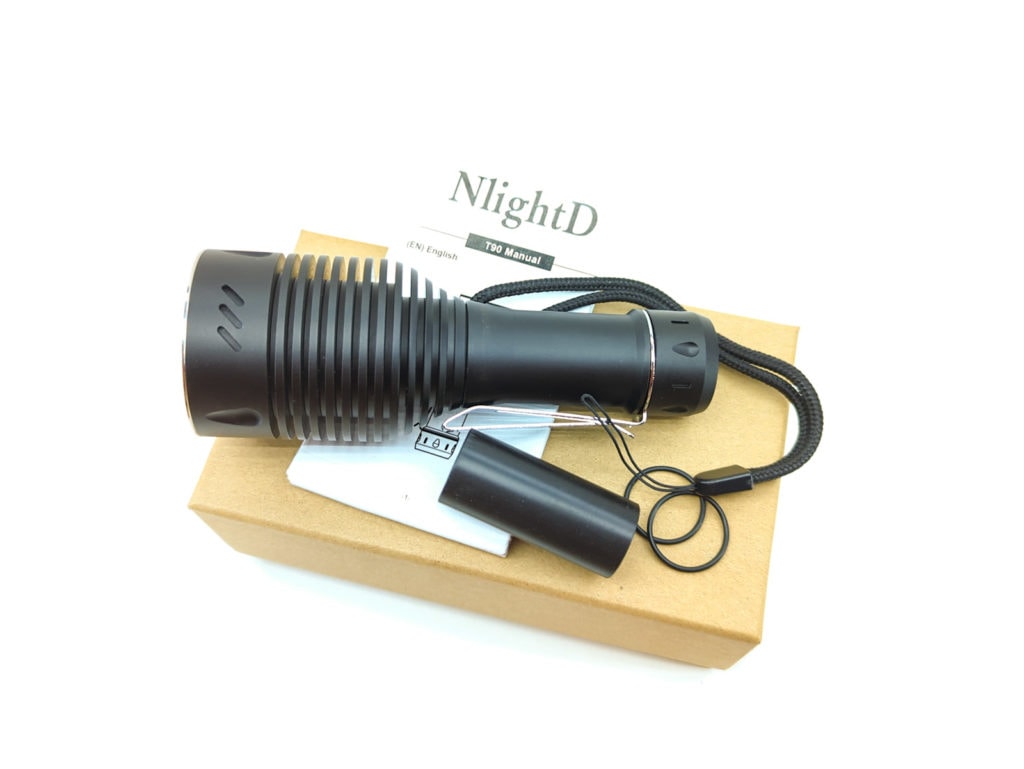
Flashlight in use
Like I mentioned in the intro, I feel like the NlightD T90 is heavily influenced by the Lumintop FW3A series of lights, probably closest to the X9L model – a big head version that sports a SBT90.2. The T90 shares the dual-tube design, completely smooth body tube, e-switch in the tail, and captive pocket clip. Without having any knurling, it is a bit slippery. But if your hand rides up towards the head, there are a lot of large heatsink fins that provide some grip. That heatsink is massive, especially compared to the size of the body. This should help a lot with heat dissipation for these monster LEDs.
The chrome plated clip is strong and attractive and is held captive by the tailcap. It’s of the two-way variety which can be nice, but doesn’t really make any sense for a light this large. An odd decision, but it doesn’t really hurt anything. The T90 has one thing you won’t see on a FWxx light: the tailcap is machined with a lanyard attachment point. This item is my only grip with the machining of the T90 – it is very sharp and rough.
Use cases… this is a throwy, hot-rod flashlight. It’s not the most practical light for much of anything. I suppose you could take it for walking the dog or lighting up your backyard. I just wouldn’t expect to stay in Turbo for all that time. If you’re ok running your light in a less-than-maximum mode, it should be ok for whatever a thrower-type tasks.
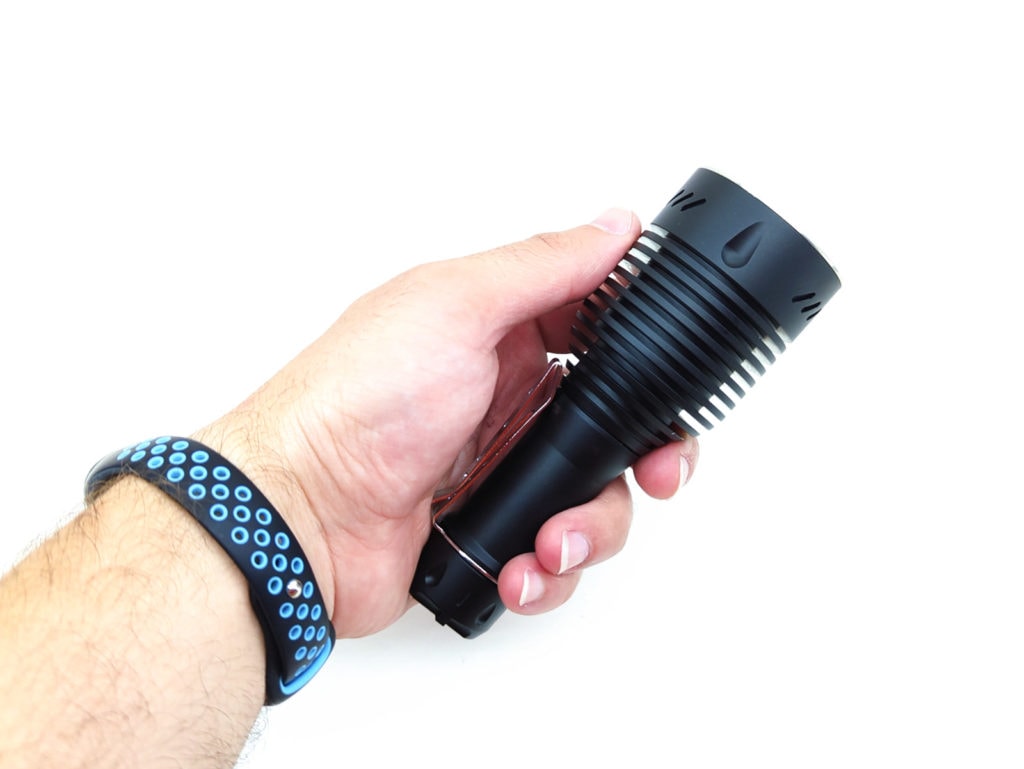
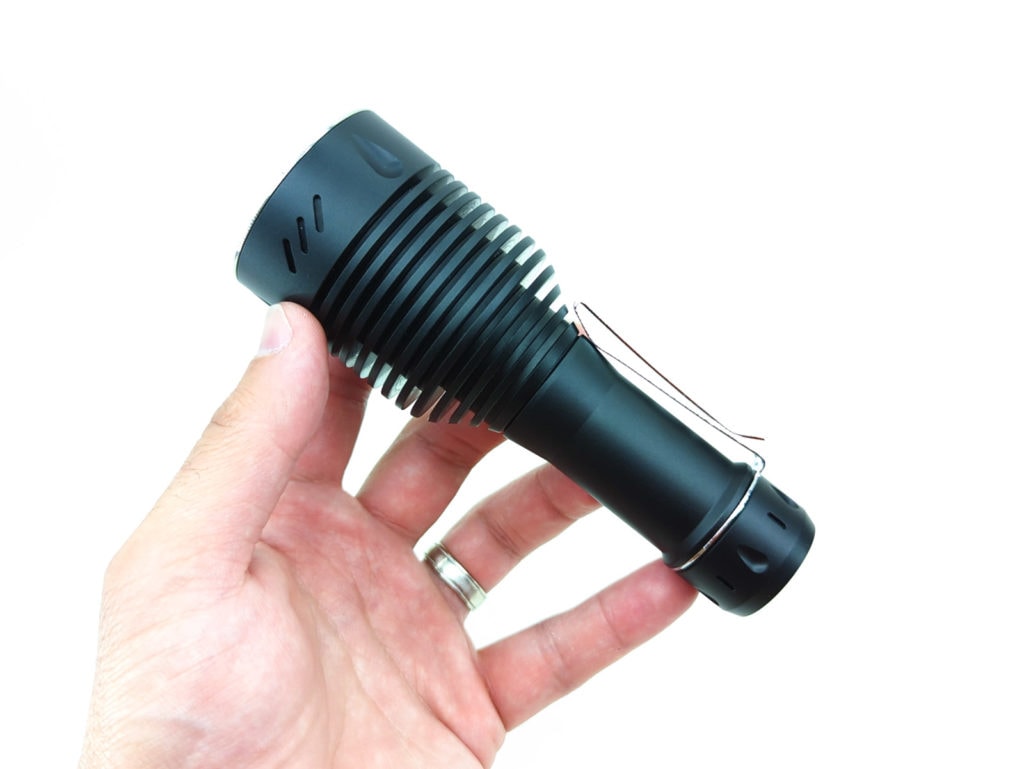
Build Quality, and Warranty
The NlightD T90 is black anodized aluminum, pretty standard fare. Everything is very smooth (too smooth?) and the anodizing is satin. All in all, it seems well machined and put together, aside from that rough lanyard attachment point. The threads are beefy and pre-lubed and have two o-rings at the rear. On my samples, it seems like the body tube is glued to the head which is a bit of a bummer. I was hoping to mess with firmware, but that seems out of the question until I can break that glue loose.
Warranty: despite the manual being very extensive, I don’t see where it mentions anything about a warranty. I don’t doubt that Neal will be helpful, but I don’t see anything in writing.

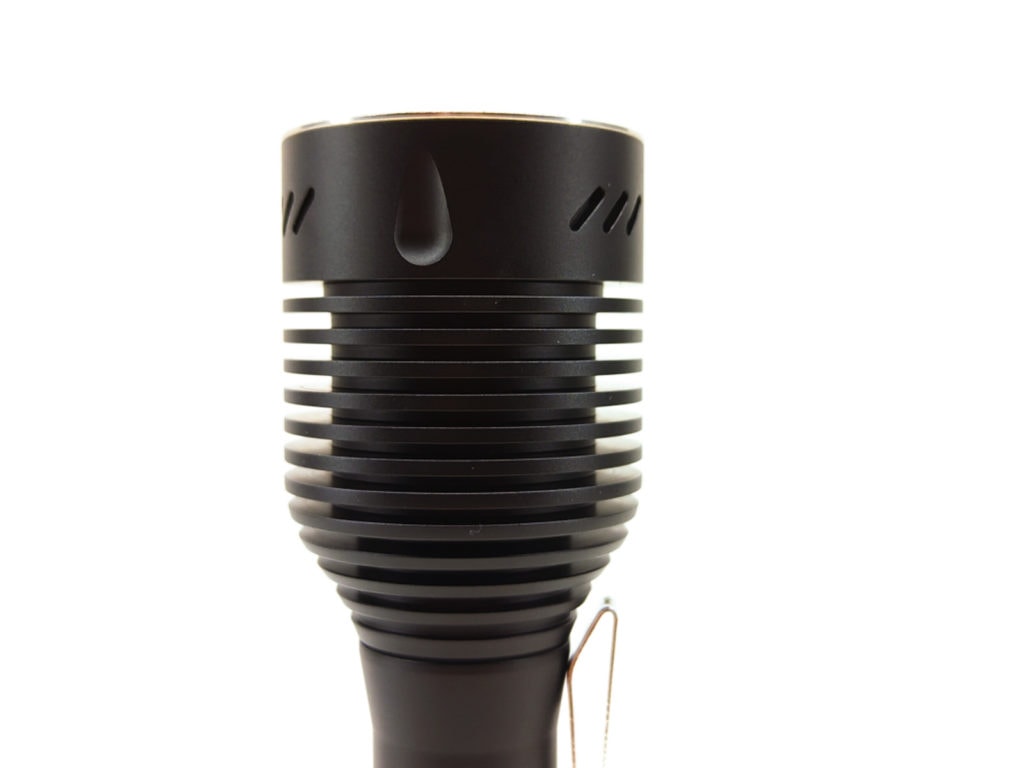
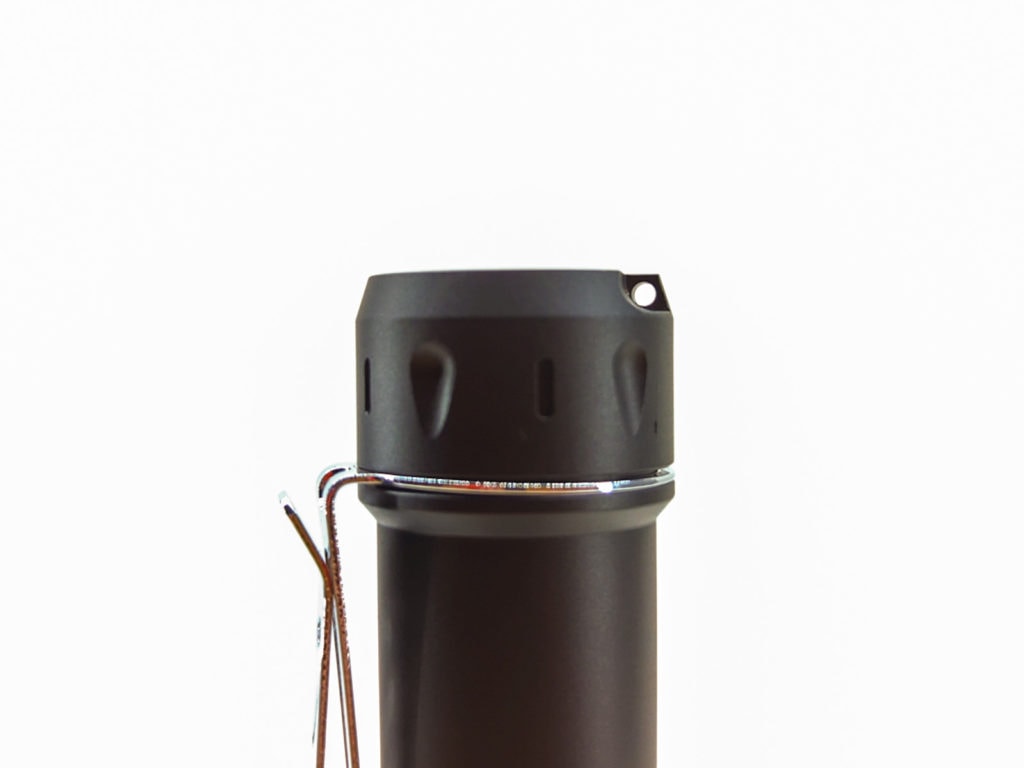
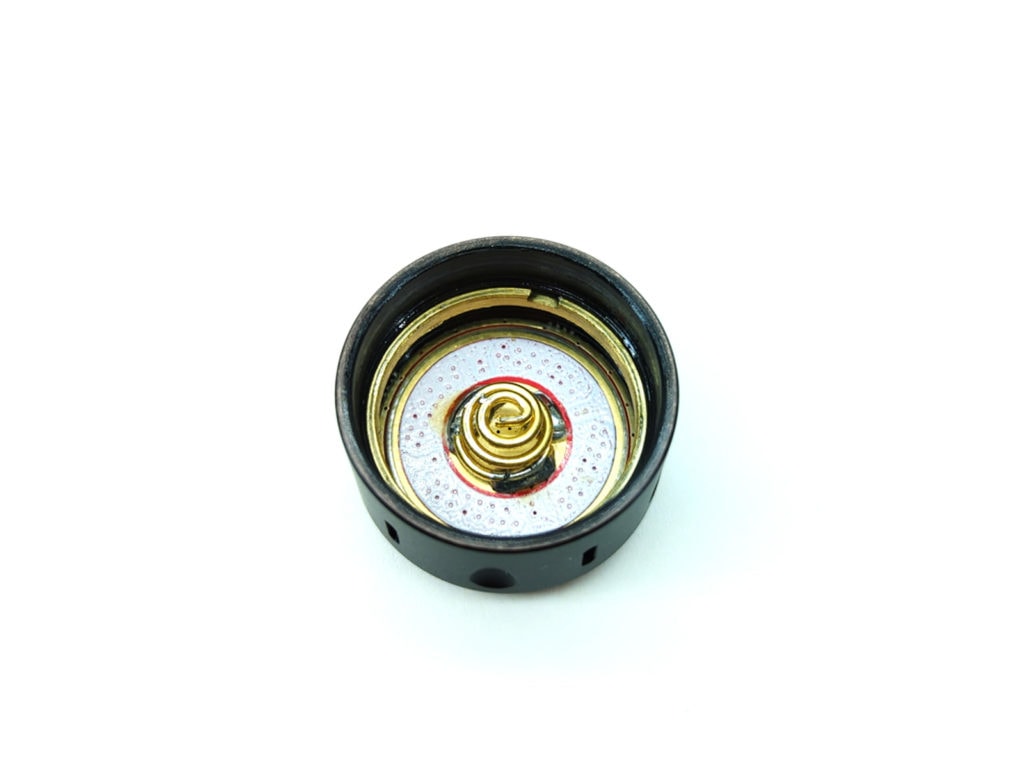
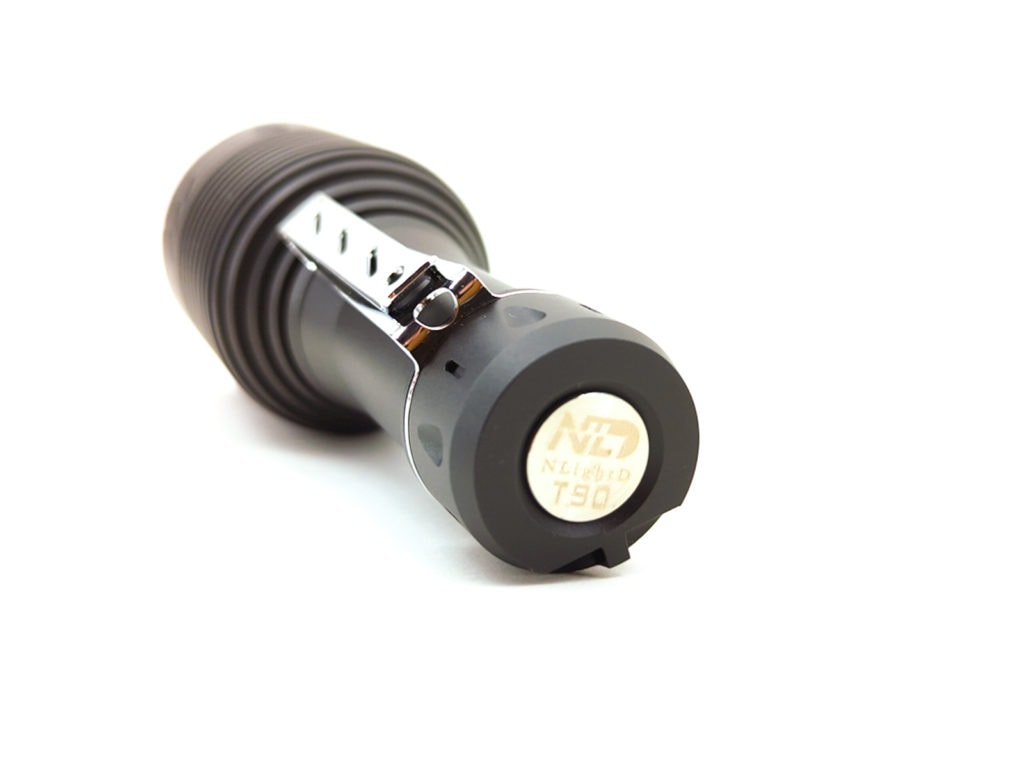
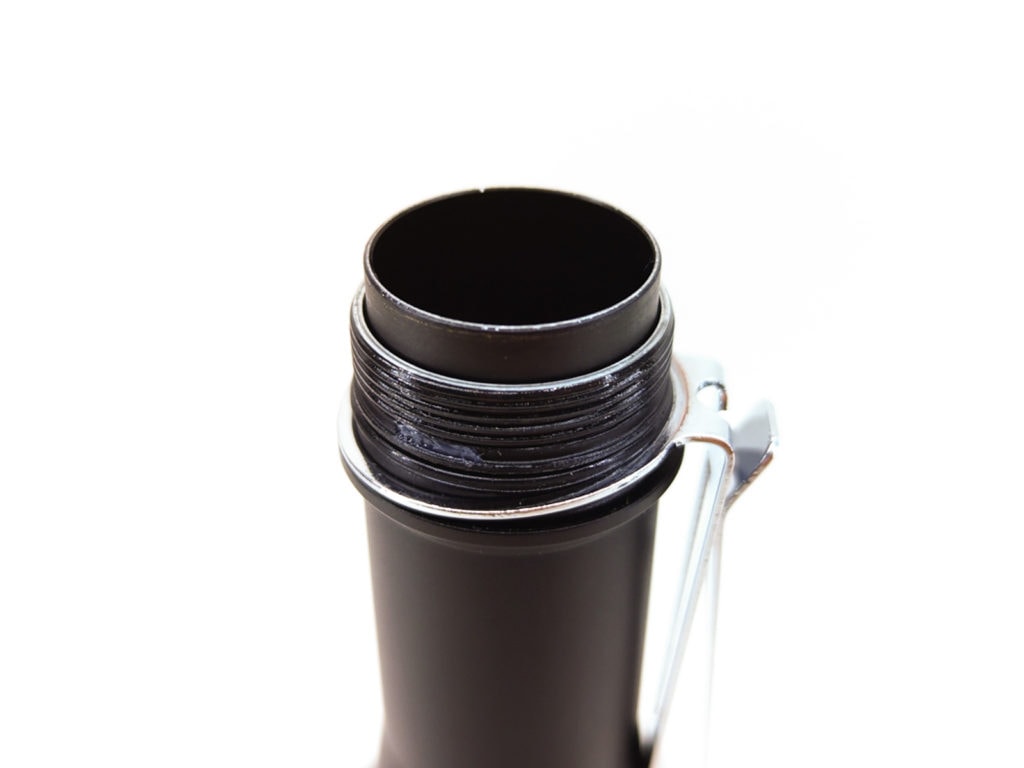
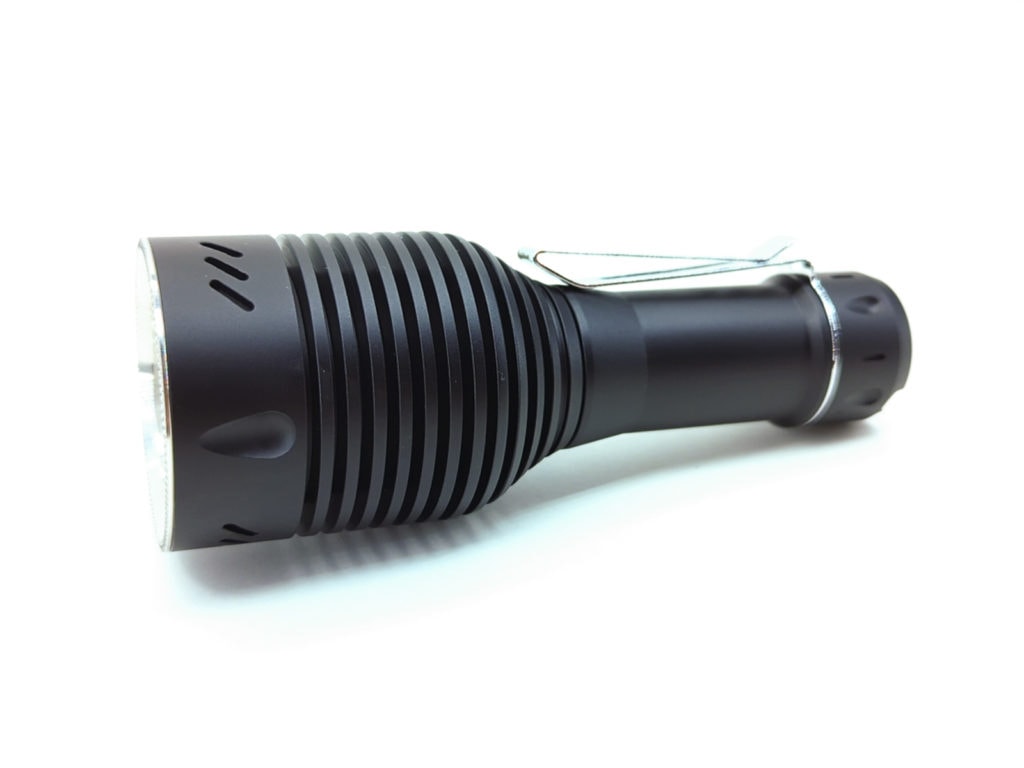
LED, Lens, Bezel, Beam, and Reflector
The T90 uses a large, deep, wide reflector. It’s smooth and can create a pretty tight beam. The reflector is covered with an AR-coated sheet of glass and held in place with a stainless steel bezel ring. The bezel is styled a bit unusually – it’s what I might call reeded. Not smooth, but not crenulated either – just small ridges all the way around.
While the original T90 featured the Luminus SBT90.2, these versions use a couple of new Chinese LEDs: the GT9090 and the SFN43. The GT9090 is essentially a SBT90.2 clone – it’s a big domeless LED with a ton of bond wires. The other emitter that Neal is using in the T90 is the SFN43, at least that’s what is listed on Nealsgadgets. While I trust Neal to know what he is selling, tables I’ve seen around the web describe the SFN43 as a 5050 (5.0 x 5.0 mm) LED, and that’s certainly not what we’re dealing with here. This LED measures 11.0 x 10.0 mm and has 16 dies. I’m wondering if maybe this is the SFH43P? With all of these new Chinese LEDs and scant documentation, it’s difficult to say.
The GT9090 is the throwier of the two LEDs. In comparing my test results with those that Marco recorded with the SBT90.2 version, this GT9090 puts out around 96% of the light and has 90% of the throw – not too bad for a Chinese clone of an expensive LED. The SFN43 (or whatever it is) pumps out about 38% more lumens than the GT9090 version, but is more floody.
Opple Light Master measurements of the GT9090:
- CCT: 7007K
- CRI: 69.8 Ra
- DUV: +0.0029
Opple Light Master measurements of the SFN43:
- CCT: 7016K
- CRI: 70.8 Ra
- DUV: 0.0000 (right at 0? how about that for a neutral tint!)
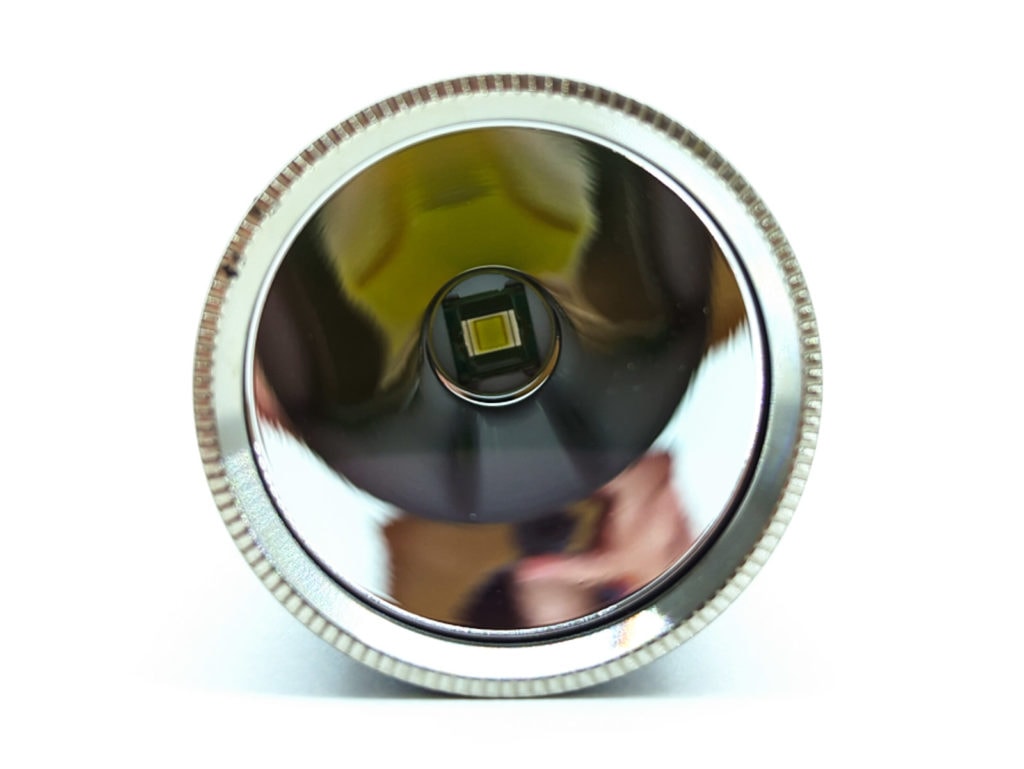
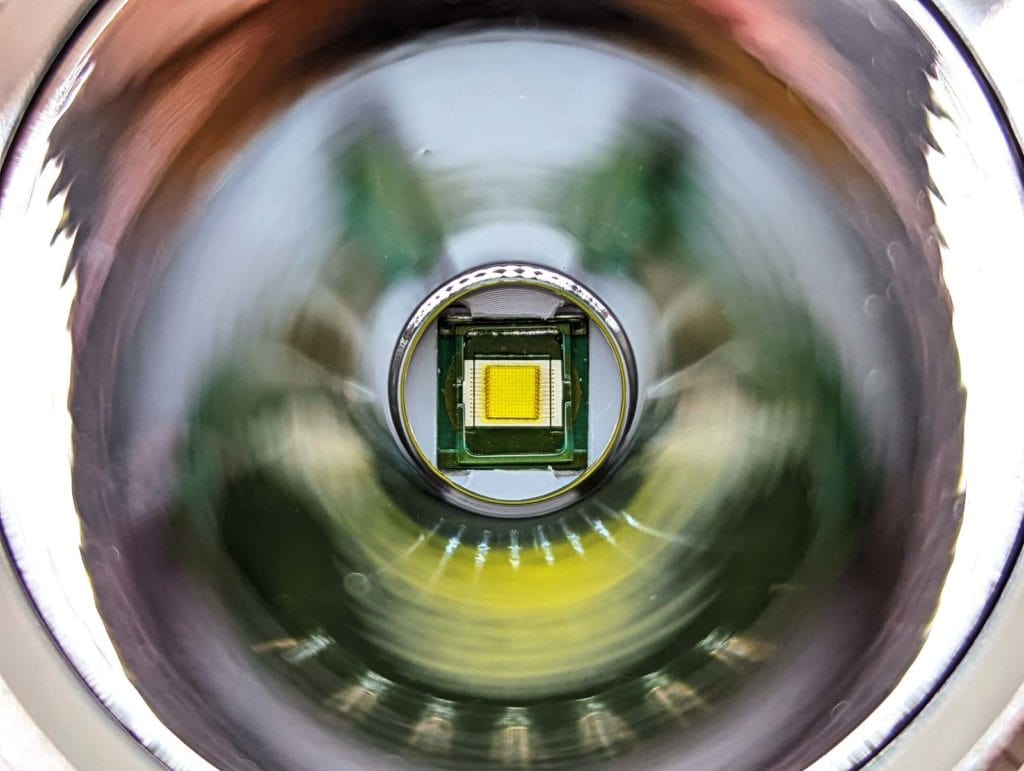
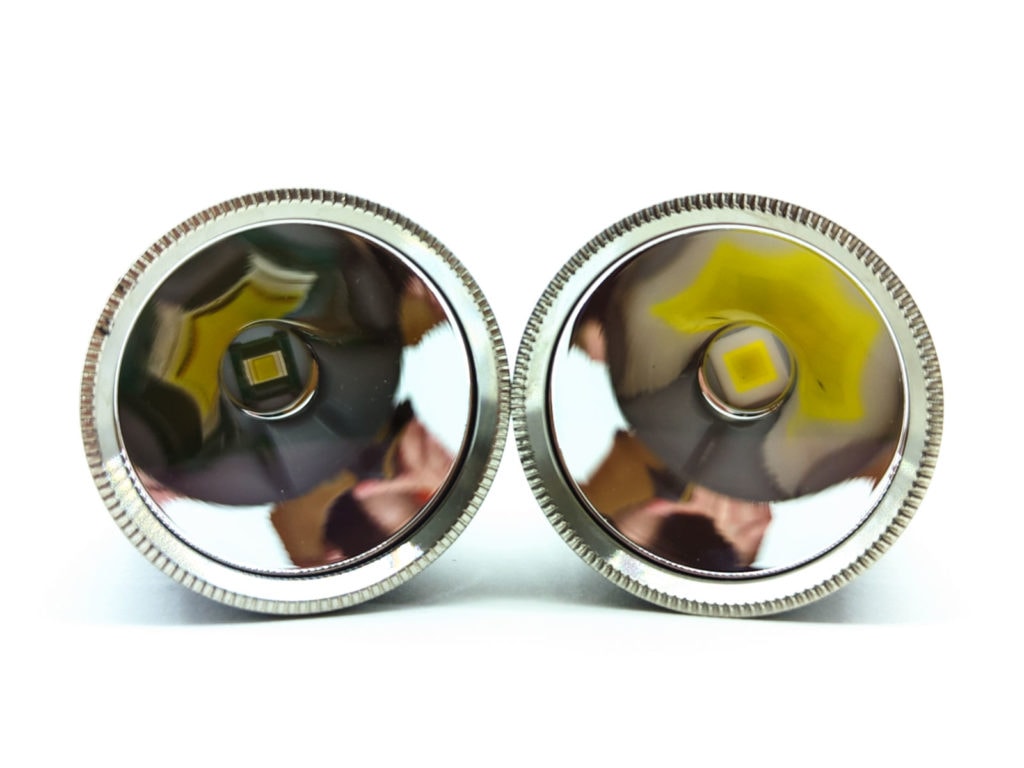
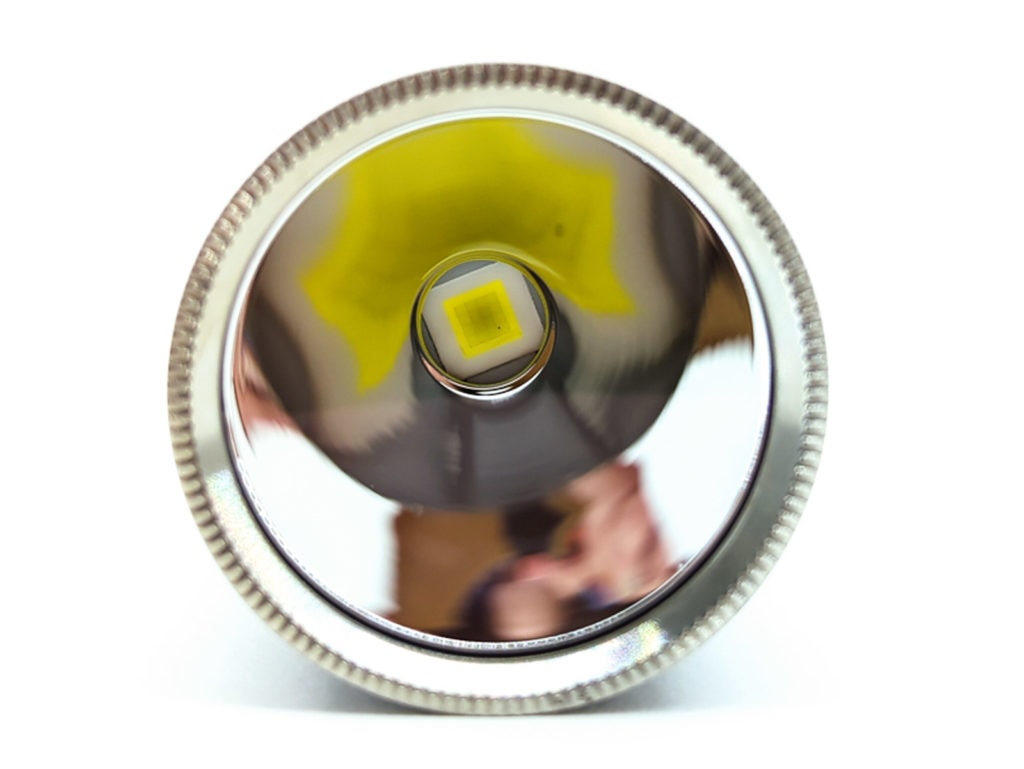
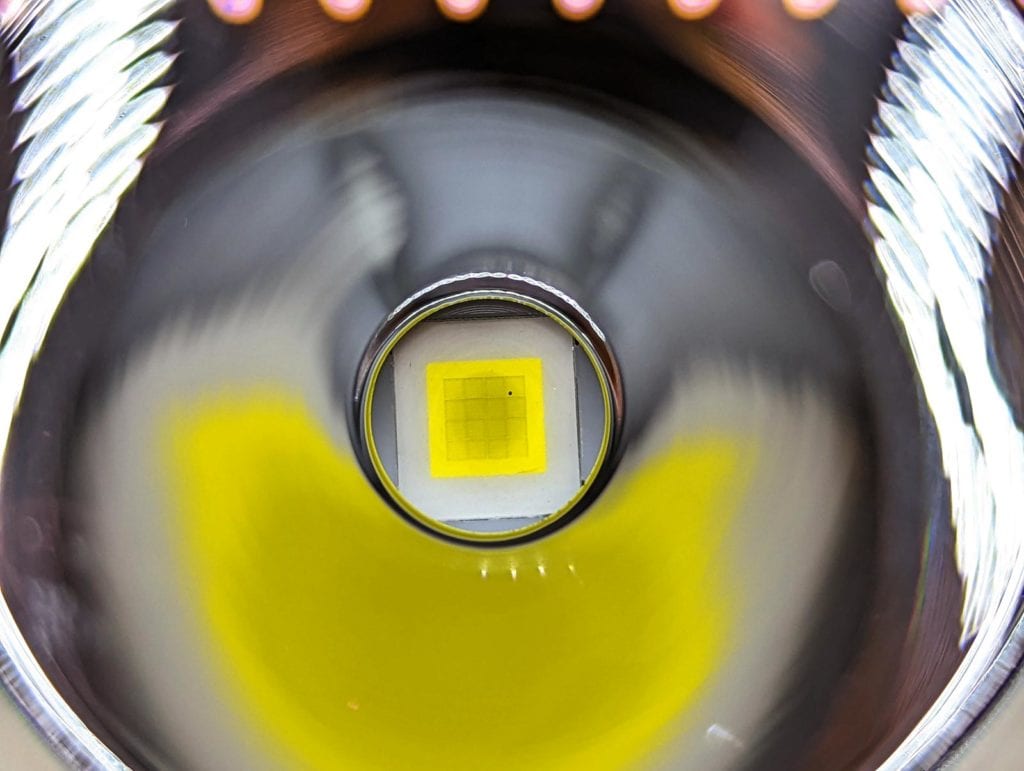
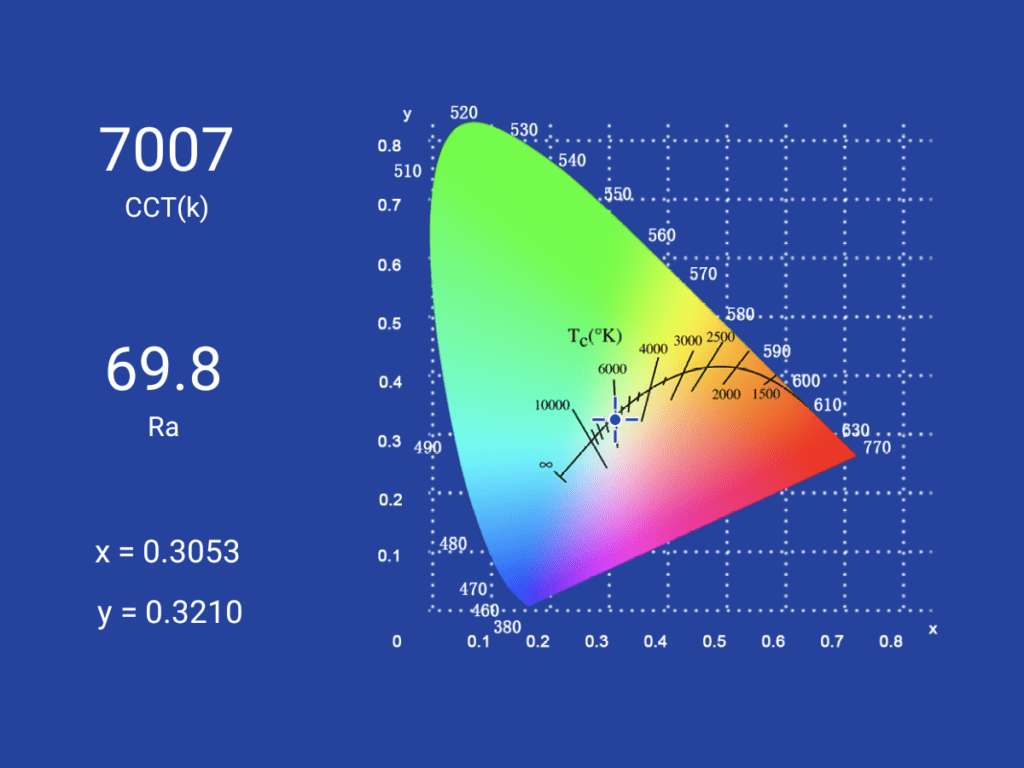
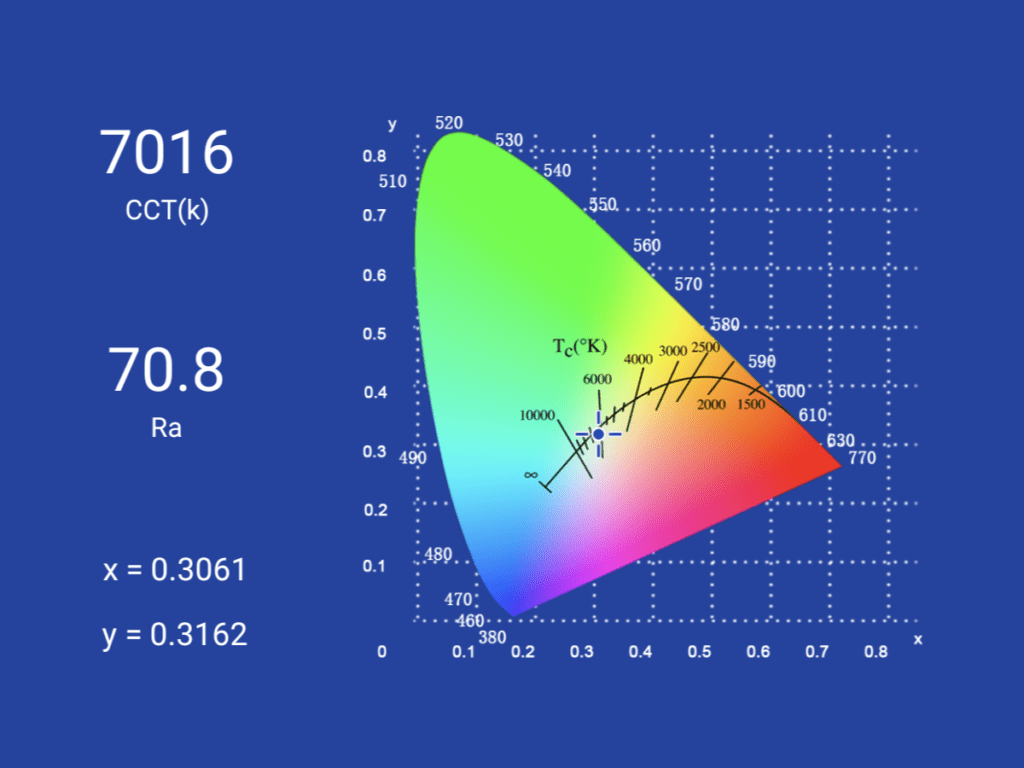
Dimensions and size comparison
Dimensions:
| Dimension | Millimeters | Inches |
|---|---|---|
| Length | 138 | 5.44 |
| Head diameter | 50 | 1.97 |
| Body diameter | 26.6 | 1.05 |
Weight:
| Weight | Grams | Oz. |
|---|---|---|
| Without battery: | 215.7 | 7.61 |
| With battery (Samsung 40T) | 282.8 | 9.98 |
Flashlight size comparison with its competition
SBT90.2 / GT9090 throwers, left to right: Astrolux FT03S Copper, Fireflies T9R, NlightD T90
High power Chinese LED lights, left to right: Nightwatch Incredible NS73V1, NlightD T90 GT9090, NlightD T90 SFN43, Lumintop GT3 Pro
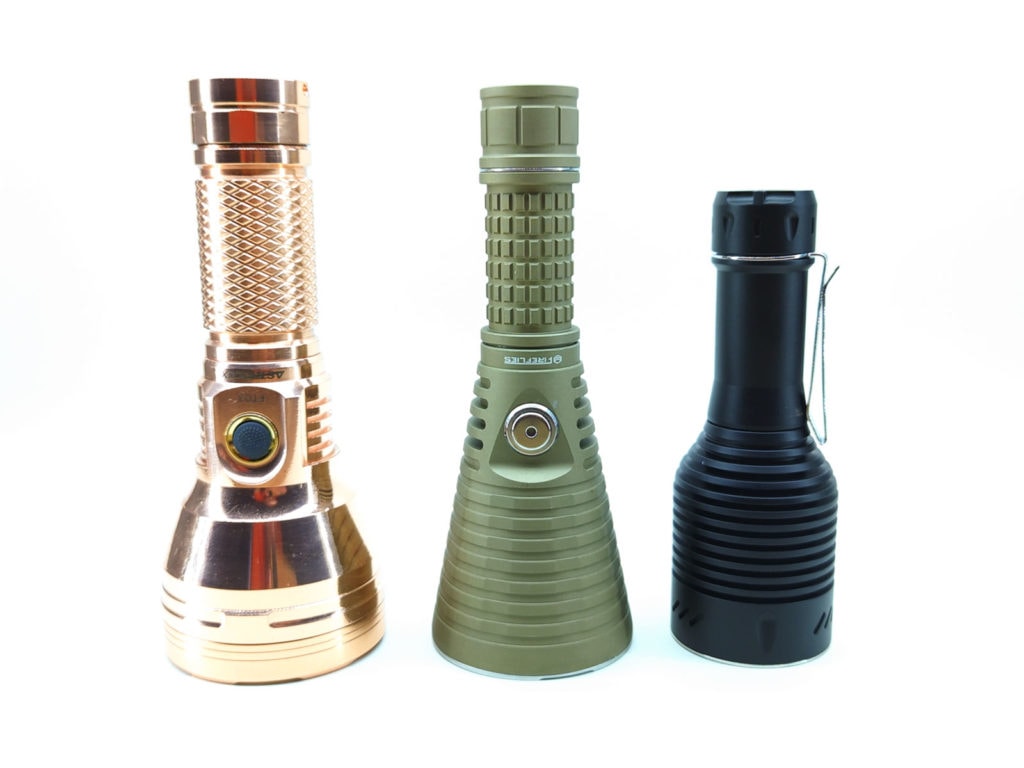
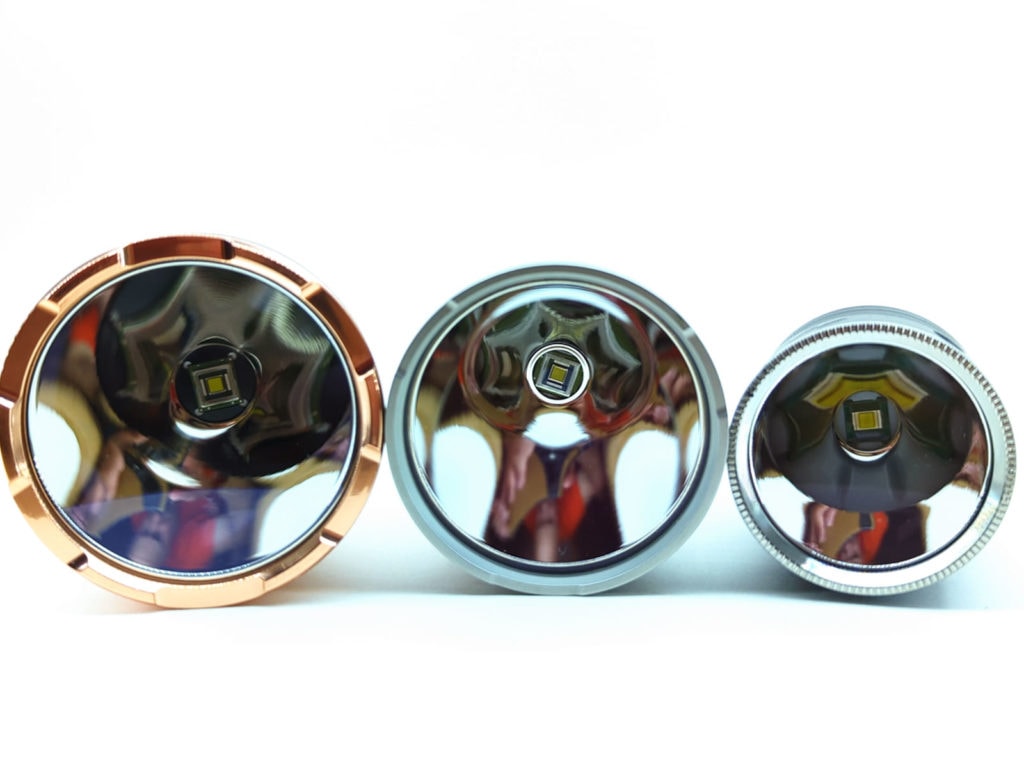
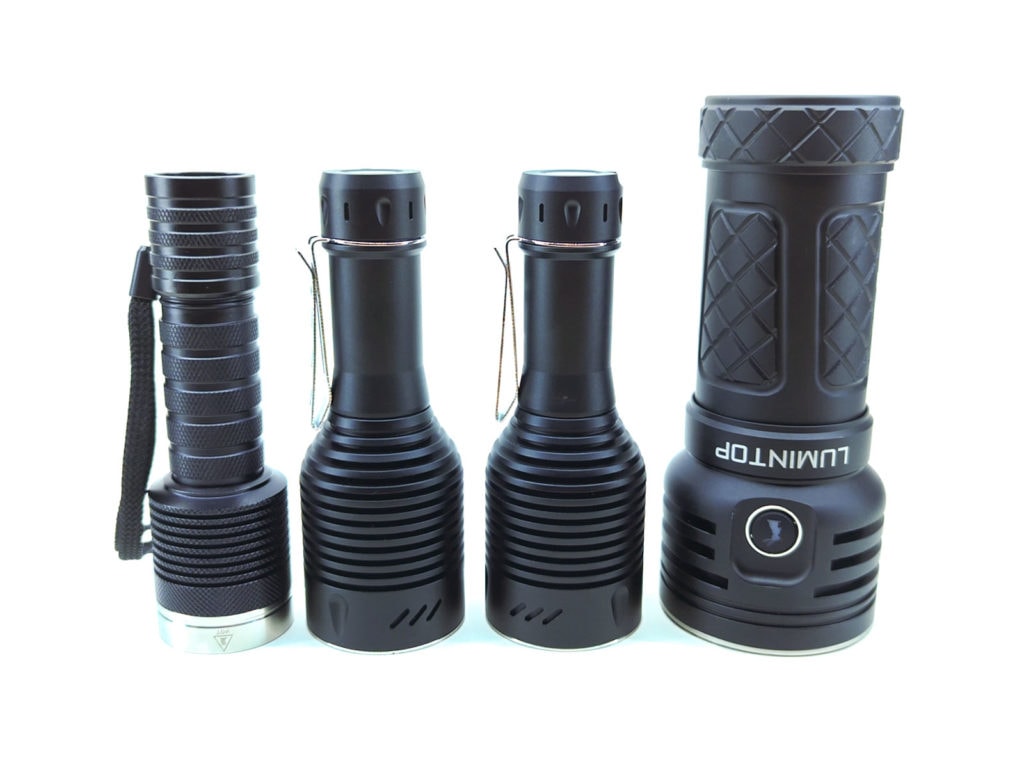
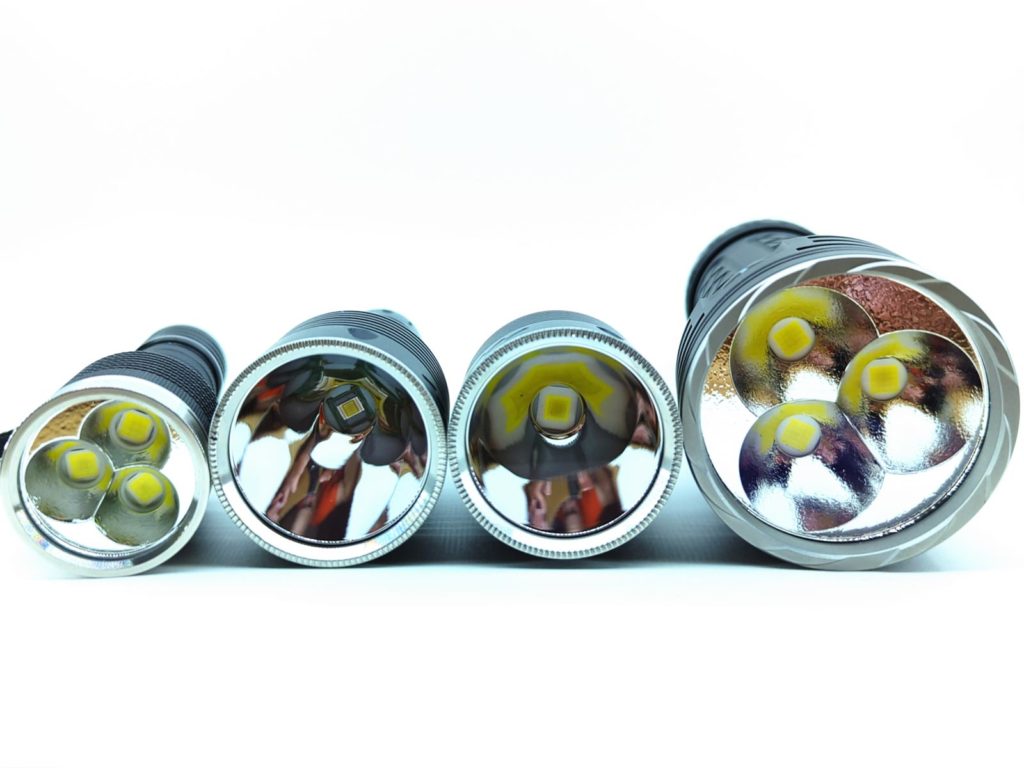
Driver & User Interface:
The firmware used in this light is known as Anduril:
Check out the full Anduril UI manual here.
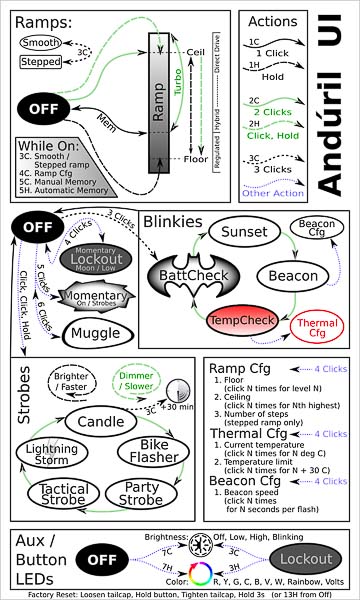
From OFF:
- Single-click: ON
- Double click: High
- 3 clicks: Battery check
- 4 clicks: Lock Out
- 5 clicks: Momentary On
- 6 clicks: Muggle mode
- 7 clicks: Aux configuration mode
Enter Special/Fun modes from OFF:
- 2 clicks + hold: Strobe modes (Click, Click, Click and hold)
- 4 clicks: Lock Out mode (momentary on: dim)
- 5 clicks: momentary mode (Bright) ( you can only deactivate by breaking electrical contact between the batteries and the driver by unscrewing the body from the head.
- 6 clicks: Muggle mode
From ON:
- Single-click: Off
- Double click: Turbo
- 3 clicks: change ramping mode. Instead of a smooth increase, it has 6 little steps between Low and Max.
- 4 clicks: ramping configuration mode (Problematic if you make some changes here by accident)
- Press and hold: brightness ramps up.. release and press and hold again to ramp down.
SPECIAL AND FUN MODES:
Read the full manual on how to access and customize these modes. Also, see the firmware picture.
- Blinky Utility mode:
- Battery check
- Sunset Mode
- Beacon mode
- Temperature check
- Strobe / Mood modes:
- Candle
- Bike flasher
- Party strobe
- Tactical Strobe
- Lightning mode
- Lockout mode (can’t use the light) (activate by 4 clicks)
- Momentary mode (signaling/morse coding)
- Muggle mode: (safer for children)
- Configuration mode
- Ramp config mode
LOCK OUT FEATURE:
- From OFF: 4 clicks. To deactivate click another 4 times.
Batteries & Charging
The NlightD T90 uses 21700 batteries. It does come with an 18650 adapter that you can use if you have to, but a 21700 is definitely what you should be using. Because of the high power consumption, unprotected batteries are recommended. Flat top and button top batteries should work just fine, but protected batteries are too long to fit. For my testing I used a Samsung 40T battery. You’d likely see a little bit higher turn-on numbers with a 30T, but shorter runtimes
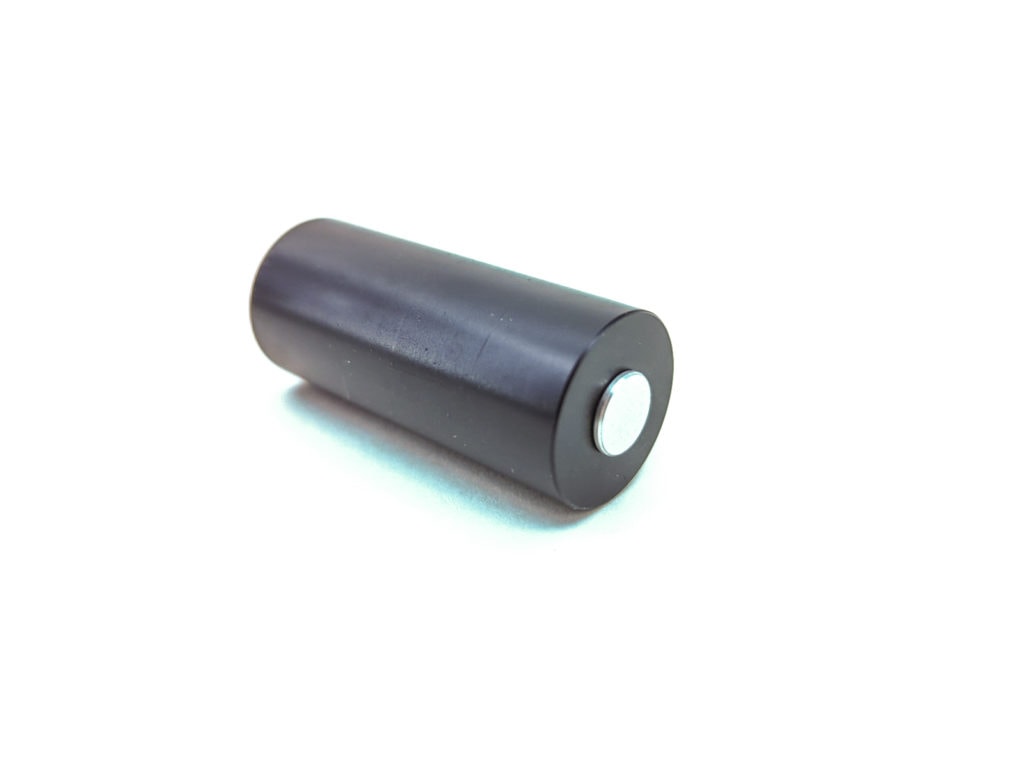
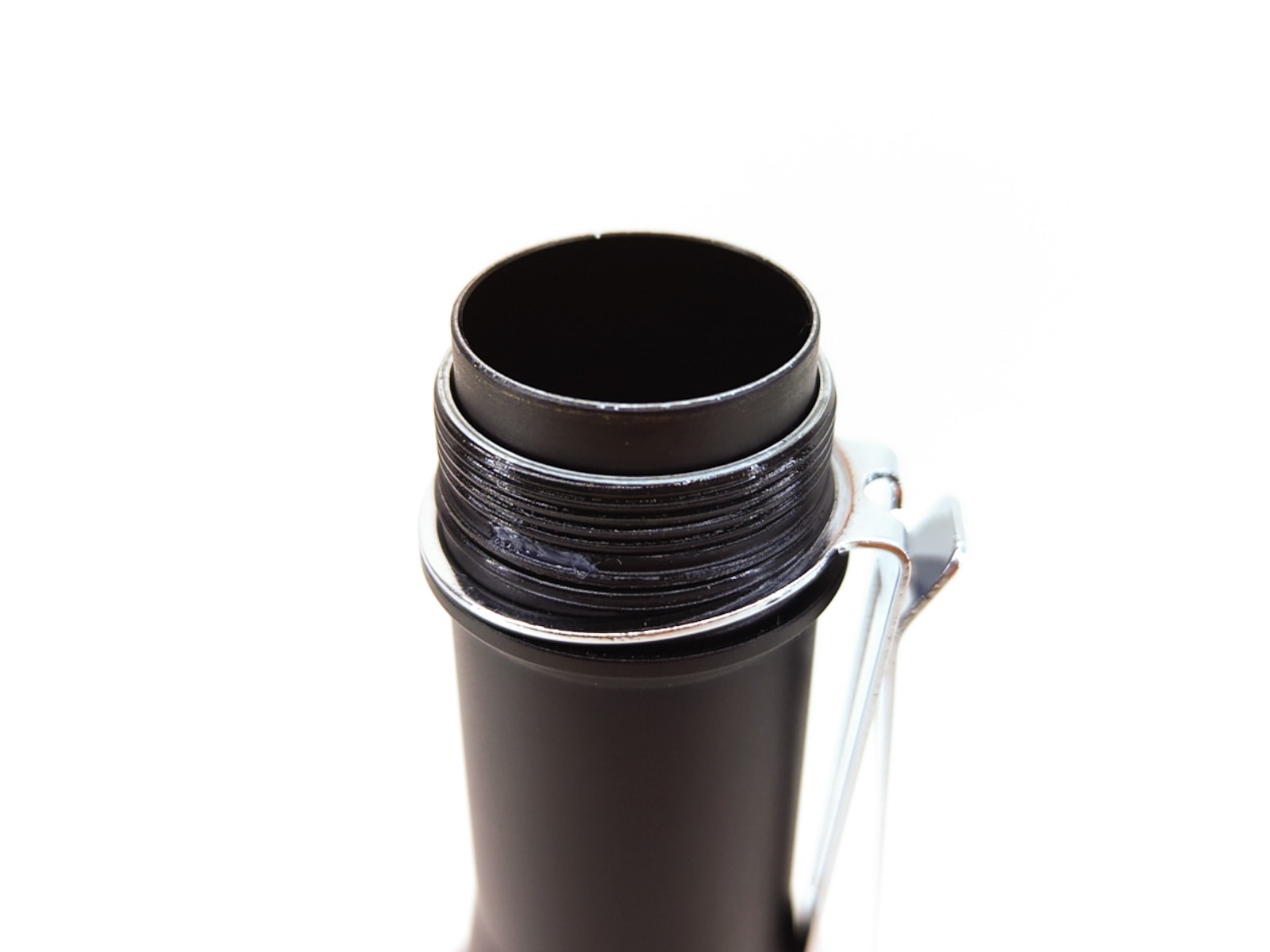
Performance test
Lux was measured by a UNI-T UT383 BT at 10 meters. Lumens were measured in a homemade lumen tube using a TSL2591 sensor, calibrated with a Maukka calibration light. The temperature was monitored with a MLX90614 IR temperature sensor. A Samsung 40T was used.
Lumen measurements (for each mode)
GT9090 Version:
| Mode | Amps at start | Specs | turn on | 30 sec | 10 minutes |
|---|---|---|---|---|---|
| Level 1 | 18 mA | – | 5 lm | 5 lm | – |
| Level 2 | 93 mA | – | 31 lm | 31 lm | – |
| Level 3 | 250 mA | – | 86 lm | 85 lm | – |
| Level 4 | 490 mA | – | 172 lm | 171 lm | – |
| Level 5 | 0.9 mA | – | 350 lm | 347 lm | – |
| Level 6 | 1.7 A | – | 611 lm | 419 lm | 576 lm |
| Level 7 | 2.8 A | – | 991 lm | 718 lm | 531 lm |
| Turbo | 22 A | 5000 lm | 4901 lm | 814 lm | 474 lm |
SFN43 Version:
| Mode | Amps at start | Specs | turn on | 30 sec | 10 minutes |
|---|---|---|---|---|---|
| Level 1 | 18 mA | – | 6 lm | 6 lm | – |
| Level 2 | 91 mA | – | 37 lm | 37 lm | – |
| Level 3 | 240 mA | – | 99 lm | 99 lm | – |
| Level 4 | 480 mA | – | 202 lm | 202 lm | – |
| Level 5 | 0.9 A | – | 407 lm | 403 lm | – |
| Level 6 | 1.7 A | – | 709 lm | 318 lm | 672 lm |
| Level 7 | 2.8 A | – | 1148 lm | 546 lm | 648 lm |
| Turbo | 20 A | 6300 lm | 6755 lm | 941 lm | 566 lm |
Parasitic drain:
- 26 µA
Runtime graph
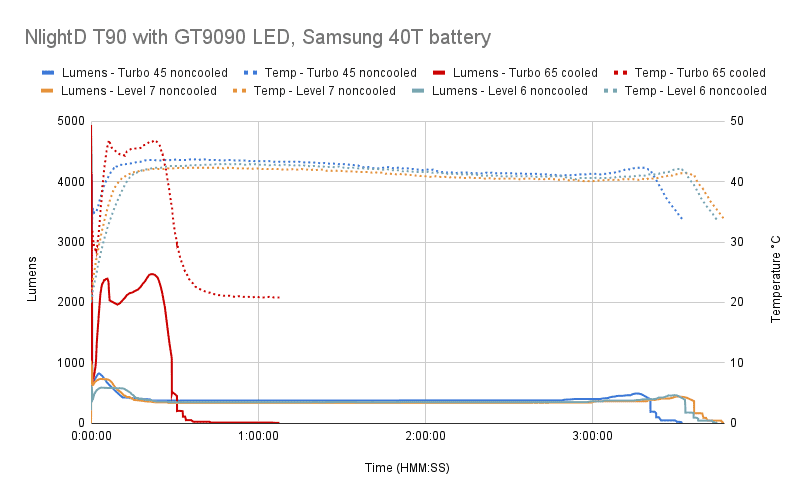
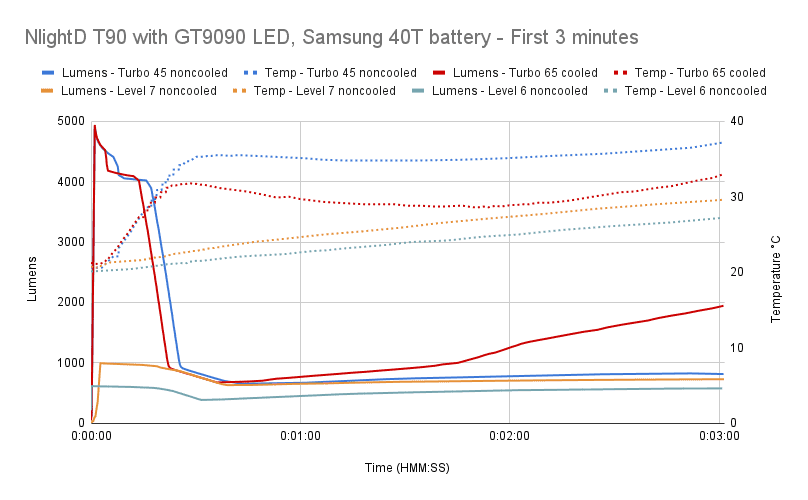
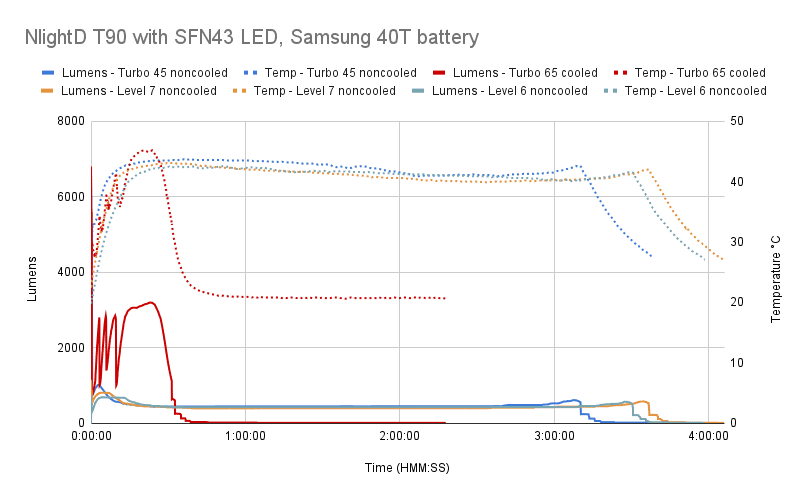
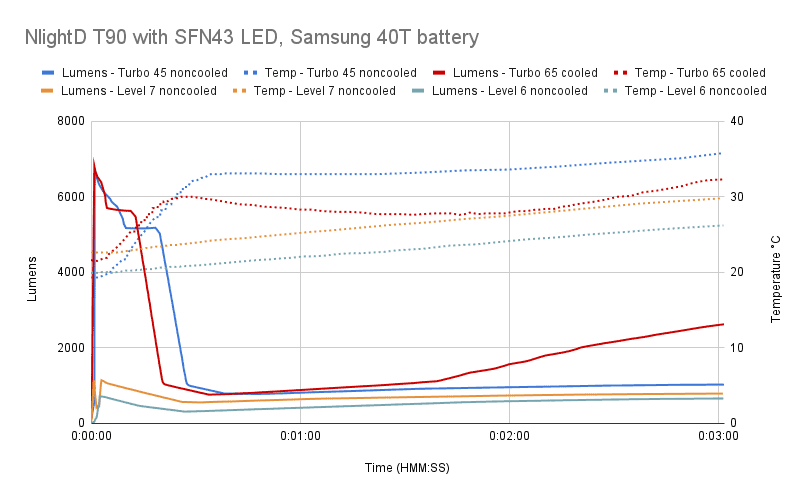
Being high-power Anduril-based lights, I fully expected the output to drop pretty quickly. But the rate at which the output dropped was laughable. In Turbo, the lumens dropped off a cliff within the first 20 seconds. Shoot, even the ~700 lumen mode started dropping off within 20 seconds. And before you ask – yes, I already performed the thermal calibration. That’s the first thing I do with any Anduril light. One of the lights was already spot-on, the other was off by 14°C.
So, to try and give the T90 a fighting chance, I upped the thermal limit to 65°C (instead of the usual 45°C) and pointed a fan at it. While the long-run output increased dramatically, it still experienced the initial huge drop by 20 seconds. So while the body stayed cool, the driver was hot. This tells me that the driver design could be improved, or its heatsinking to the body of the light could be vastly improved – probably both.
GT9090 Version:
| Mode | Specified | Measured runtime (ANSI) | Time till 1 lumen |
|---|---|---|---|
| Level 6 | N/A | 3 hr 38 min | 3 hr 44 min |
| Level 7 | N/A | 3 hr 41 min | 3 hr 47 min |
| Turbo | N/A | 3 hr 24 min | 3 hr 32 min |
SFN43 Version:
| Mode | Specified | Measured runtime (ANSI) | Time till 1 lumen* |
|---|---|---|---|
| Level 6 | N/A | 3 hr 37 min | 3 hr 58 min+* |
| Level 7 | N/A | 3 hr 42 min | 4 hr 8 min+* |
| Turbo | N/A | 3 hr 15 min | 3 hr 40 min+* |
*Note: because of how Anduril works, the lights chugged along at around 1 lumen for hours and hours. So instead of “turn off” time, my tests ended when the light eventually got down to 1 lumen.
ANSI FL1 standards: The runtime is measured until the light drops to 10% of its initial output (30 seconds after turning on). This does not mean that the flashlight is not usable anymore. The last column shows how long the light actually works till it shuts off. If there is a + symbol, it means that the test was stopped at that particular point, but the light was actually still running. This happens on certain occasions, with certain drivers, firmware, or batteries.
Throw numbers: Peak beam intensity
Measured at 10 meters, all are in Turbo mode
| Mode | Specs | Candela measured | Meters | Yards |
|---|---|---|---|---|
| GT9090 @ 0 sec | – | 27,000 | 329 | 360 |
| GT9090 @ 30 sec | 162,300 cd | 176,500 cd | 840 | 919 |
| SFN43 @ 0 sec | – | 14,800 | 243 | 266 |
| SFN43 @ 30 sec | 122,600 cd | 114,400 cd | 676 | 740 |
Just like in the lumen test, we can see that the turn-on values are really close to Neal’s specs. But because of the instant drop in output, they are nowhere near that at the 30 second mark.
Extra info: Peak beam distance according to ANSI FL1 standards: The calculated value of distance in meters at which the flashlight produces a light intensity of 0.25 lux. (0.25 lux is about the brightness of a full moon shining on an object).
Beamshots
The farm shed in these beamshots is 100 meters (109 yards) away. Pictures were taken with my Pixel 6 using ƒ/1.9, ⅕ second exposure time, and ISO200.
- NlightD T90 GT9090
- NlightD T90 SFN43
- Nightwatch NS73v1 Incredible
- Mateminco MT90 mini
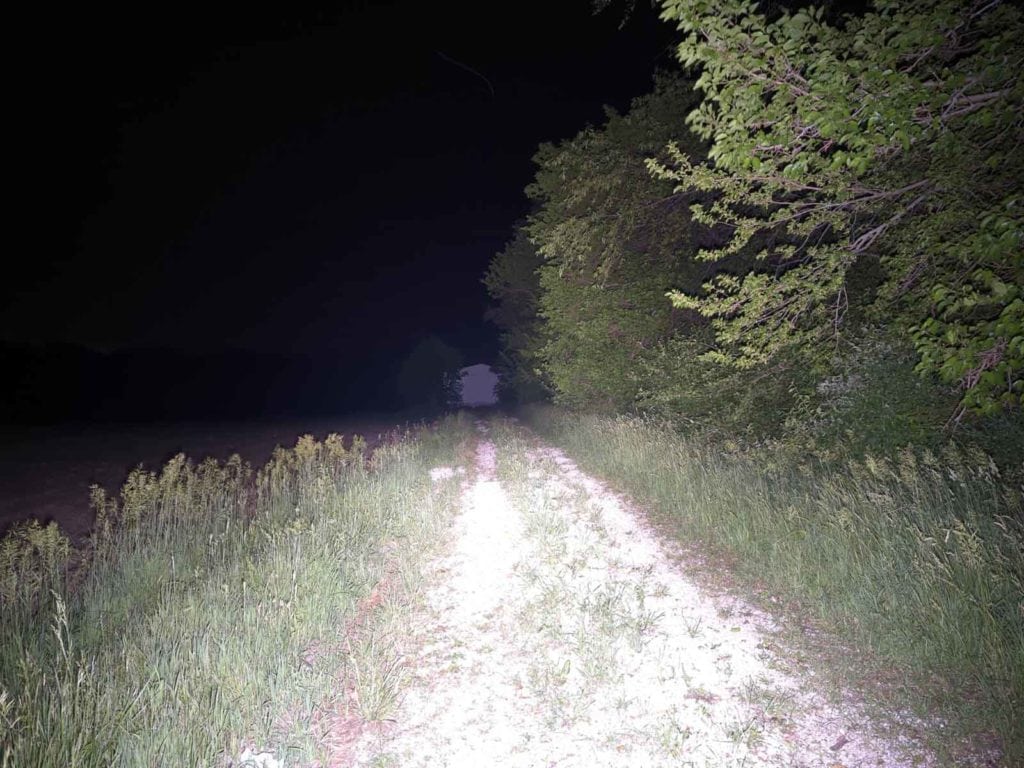
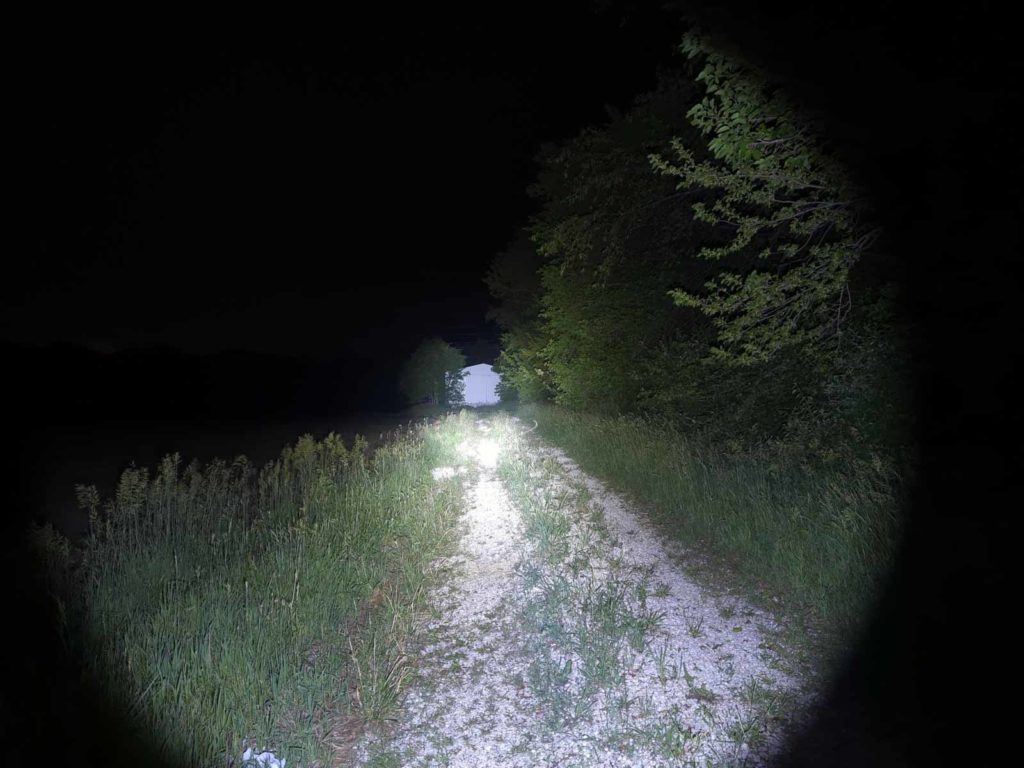
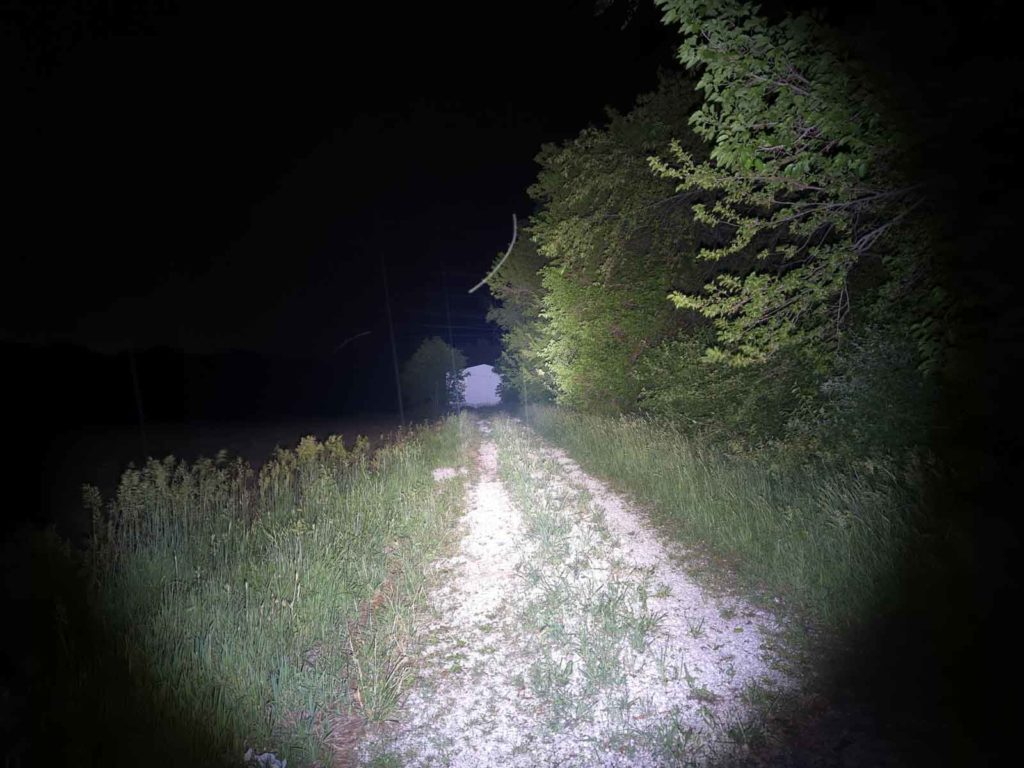

Disclaimer: This flashlight was sent to me for review at no cost by Nealsgadgets. I have not been paid to review, nor have I been holding back on problems or defects.
Final Verdict
Pros
- Sleek yet beefy build
- Powerful for its size
- Anduril UI (preference)
- Less expensive than the SBT90.2 version
Cons
- Output drops sharply within 20 seconds
- Still using original Anduril
Explanation on star ratings:
1: Avoid: my phone flashlight would be a better choice – 2: Poor: significant defect or issues; almost unusable – 3: Average: some defects or issues; but still usable 4: Good: recommended (minor issues) – 5: Great: highly recommended

3.5 stars: ★★★⋆
The NlightD T90 is really impressive… for the first few seconds. Just like what Marco found with the SBT90.2 version of the T90, output drops quickly and sharply. Even with the thermal limit set high, the output still drops right away. That makes me think that improvements really need to be made to the thermal path from the driver to the body, which never really got all that hot thanks to the numerous heatsink fins. The GT9090 does an excellent job of mimicking the SBT90.2 at a fraction of the cost, while the SFN43 version might appeal to those that need all the lumens they can get. The NlightD T90 really is a neat enthusiast light, but not very practical until thermals get worked out.
Nlight T90 v2 discount code
Coupon code to get a huge discount at Nealsgadgets: 1lumenNew
1lumen selects and reviews products personally. We may earn affiliate commissions through our links, which help support our testing.